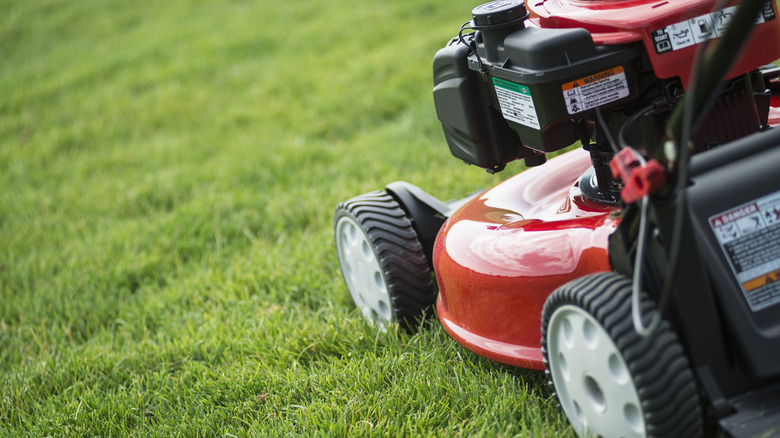Follow This Lawn Mowing Rule For A Luscious Green Yard
The one-third lawn mowing rule is a fundamental guideline in lawn care that suggests you should never remove more than one-third of your lawn's height in a single mowing session. This principle is crucial for maintaining a healthy, lush lawn. By adhering to this rule, you ensure that your grass can recover from each mowing without being stressed or weakened. Removing more than one-third of the grass length at once can lead to a variety of issues, including increased susceptibility to diseases and pests, as well as a decrease in the lawn's overall vitality.
When grass is cut too short, it can struggle to photosynthesize effectively, which impairs its growth and can lead to brown patches and thinning. Additionally, cutting more than one-third of the grass can result in a significant amount of clippings being left on the lawn, which can smother the grass and create a thatch layer that restricts water and nutrient absorption. This is why understanding and applying the one-third rule is not just about aesthetics but also about promoting a healthier lawn.
To maintain a lush, green yard, it's essential to follow this guideline consistently. The one-third rule is particularly important during the growing season when the grass is actively growing and requires frequent mowing. By avoiding drastic cuts and sticking to this rule, you help your lawn stay robust and capable of enduring seasonal changes and environmental stressors.
The one-third rule impacts lawn health and appearance
Applying the one-third rule has a direct impact on both the health and appearance of your lawn. When you adhere to this guideline, you help your grass maintain its optimal height, which enhances its ability to compete with weeds and resist disease. Proper mowing encourages thicker growth and a more uniform lawn, as the grass develops a dense canopy that shades the soil and reduces weed germination.
Moreover, consistent application of the one-third rule helps in promoting deeper root growth because the higher grass is cut the deeper roots tend to develop. When grass is not overly stressed by drastic cutting, it can develop a more extensive root system, which improves its drought resistance and nutrient uptake. This contributes to a more resilient lawn that can better withstand periods of high stress, such as hot weather or heavy foot traffic.
Another key benefit of following the one-third rule is the reduction in lawn thatch, a layer of organic material that accumulates on the soil surface. Excessive thatch can inhibit water and nutrient absorption, but by avoiding excessive mowing, you minimize the buildup of thatch. For an even better lawn care routine, consider topdressing your lawn. This practice is the easiest way to achieve gorgeous grass by providing essential nutrients and improving soil structure.
Additional tips to enhance your lawn care routine
In addition to adhering to the one-third rule, there are several other strategies to enhance your lawn care routine. One such strategy is addressing any uneven areas on your lawn. While heavy machinery is often used for this purpose, you can achieve a smoother surface using less invasive methods. Techniques such as dethatching and topdressing can effectively even out bumps and low spots. These methods can be particularly useful for homeowners looking to revitalize their lawns without resorting to expensive or cumbersome equipment.
Another beneficial practice is using Epsom salt to keep your lawn bright green. This unexpected hack provides magnesium, a crucial nutrient that aids in chlorophyll production, which is essential for photosynthesis and overall grass health. Magnesium deficiencies can lead to yellowing of the grass and poor growth, so regular applications of Epsom salt can help maintain a vibrant, lush lawn. Epsom salt not only enhances the color but also promotes stronger, more resilient grass.
Additionally, it's important to be cautious of common lawn care myths that can mislead you into ineffective practices. For example, many believe that frequently watering the lawn is the key to a lush yard, but overwatering can lead to shallow root systems and increased susceptibility to diseases. By staying informed and applying these insights, you can optimize your lawn maintenance routine and achieve a healthier, more attractive yard.


